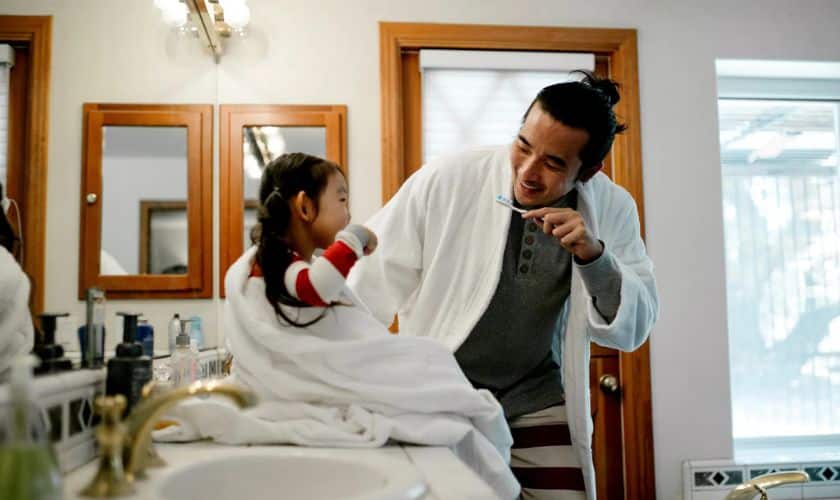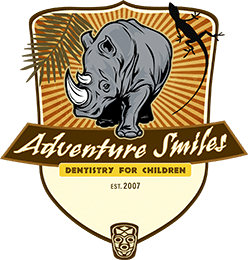
Teaching your kids the importance of dental hygiene is essential for their overall health and well-being. Good dental habits should be learned from an early age to ensure that teeth are kept healthy and strong. This guide will show you how to teach your kids the right way to maintain good oral hygiene so they can enjoy healthy teeth for life.
The Basics of Dental Hygiene for Kids
It’s always early enough to teach your kids dental hygiene habits. The earlier you start, the better! Here are some essential tips to get you started:
1. Use a pea-sized amount of toothpaste on their toothbrush.
2. Help them brush for two minutes twice a day.
3. Floss their teeth once a day.
4. Avoid sugary drinks and snacks.
5. Visit the dentist regularly for checkups and cleanings.
With these essential tips, you can help your child develop healthy dental habits that will last a lifetime!
Simple Habits to Develop Good Dental Hygiene in Your Children
Here are some simple things you can do to help them develop good oral health:
1. Help them brush their teeth. It’s always early enough to teach your children good dental hygiene habits. Until they’re old enough to do it themselves, you’ll need to help them brush their teeth. But even when they can do it on their own, it’s still a good idea to supervise and ensure they’re doing a good job.
2. Encourage them to floss. Flossing is just as important as brushing, so ensure your children do it daily. You can also show them how to floss appropriately, so they know how to do it correctly.
3. Make sure they’re eating healthy foods. A balanced diet is essential for overall health, including oral health. So make sure your kids eat plenty of fruits, vegetables, and other healthy foods.
4. Take them for regular dental checkups and cleanings. Even if they’re taking good care of their teeth at home, it’s still important to see the dentist regularly for checkups and cleanings. This will help catch any problems early and keep their teeth healthy
What Foods to Avoid
When teaching kids good dental hygiene habits, one of the most important things to remember is what foods to avoid. While many different types of food can harm your teeth, a few are particularly damaging. Here are some of the worst offenders:
1. Candy: Candy is full of sugar, which can lead to cavities. It’s also sticky, which means it can cling to teeth and promote the growth of bacteria.
2. Sodas and other sugary drinks: Like candy, sodas and other sweetened beverages are loaded with sugar that can damage teeth. They can also be acidic, which can wear away at tooth enamel.
3. Starchy foods: Foods like chips and crackers contain starch, which turns into sugar when it’s digested. This sugar can then feed the bacteria in your mouth and cause cavities.
4. Coffee and tea: Both coffee and tea can stain teeth and make them appear yellow or brown over time. They can also dehydrate you, making your mouth more susceptible to bacteria growth.
5. Alcohol: Alcohol is a drying agent, so it can contribute to dehydration and dry out your mouth. This environment is ideal for growing bacteria, which can lead to tooth decay and gum disease.
Tips for Establishing Good Brushing and Flossing Habits
It’s essential to start teaching kids good dental hygiene habits early on. Here are some tips to help you get started:
1. Make sure your child brushes their teeth twice a day for two minutes each time. Use a timer to help them keep track of how long they should brush.
2. Help your child floss once a day. Show them how to do it, and then let them try it themselves.
3. Encourage your child to use mouthwash, but don’t make it mandatory. Some kids may not like the taste or sensation of mouthwash, so let them decide whether they want to use it.
4. Schedule regular dental checkups for your child. This will help ensure that their teeth are healthy and that any problems are caught early on.
5. Lead by example! If you practice good dental hygiene yourself, your child is more likely to do the same.
Role Modeling: Showing Kids How to Brush and Floss Properly
When it comes to teaching kids good dental hygiene habits, role modelling is critical. Show them how to brush and floss properly, and ensure they see you doing it too! Here are a few tips to get started:
1. Choose the right toothbrush. There are all sorts of different toothbrushes on the market these days, so it’s essential to find one that’s comfortable for your child to use. A soft-bristled brush is usually best for young children.
2. Demonstrate proper brushing technique. Show your child how to hold the toothbrush and use gentle circular motions to brush all surfaces of the teeth. Please encourage them to spit out the toothpaste after brushing.
3. Flossing 101. Many children don’t like flossing, but it’s essential to demonstrate how to do it properly. Start by showing them how to wind the floss around their fingers, then guide them through gently moving it up and down between each tooth.
4. Make it fun! Brushing and flossing don’t have to be a chore. Please help your child see it as an opportunity to take care of their smile daily. Make sure they have a fun toothbrush and toothpaste (maybe even one with their favourite character on it!), and let them know that you’re proud of them when they do a good job brushing and flossing.
Different Types of Dentistry Procedures Children May Need
Children may need many different types of dental procedures, depending on their age, oral health, and the severity of any dental problems. Some standard dental procedures for children include:
-Dental sealants: Dental sealants are thin, protective coatings applied to the back teeth (molars) to prevent cavities. Sealants can be applied in a single visit to the dentist and usually last for several years.
-Fluoride treatments: Fluoride is a mineral that helps strengthen tooth enamel and prevent cavities. Fluoride treatments can be done in the dentist’s office or home using fluoride toothpaste or mouth rinse.
-Cavity fillings: Small holes in the teeth occur when plaque and bacteria erode the tooth enamel. Cavity fillings are used to repair these holes and restore the strength of the tooth. Fillings can be made from various materials, including gold, silver amalgam, or composite resin (tooth-coloured).
-Root canals: Root canals are necessary when a tooth’s pulp (nerve tissue) becomes infected or damaged. During a root canal procedure, the damaged pulp is removed, and the inside of the tooth is cleaned and sealed. An infected tooth can eventually lead to pain, abscesses, and even tooth loss without treatment.
Common Misconceptions About Dental Care For Kids
One of the most common misconceptions about dental care for kids is that it’s unnecessary. Many parents believe that as long as their child is brushing and flossing regularly, they don’t need to worry about taking them to the dentist. However, this is different. It’s essential to take your child to the dentist for regular checkups and cleanings, even if their teeth seem healthy.
Another common misconception is that baby teeth don’t need to be cared for because they will fall out anyway. This couldn’t be further from the truth! Baby teeth are essential for several reasons. They help guide permanent teeth into place and hold space for permanent teeth. If baby teeth are lost too early, it can cause problems with the development of permanent teeth.
Finally, some parents believe that dental sealants are only necessary for kids who have cavities. Sealants are a good idea for all kids! They’re a thin coating applied to the back teeth, and they help protect against tooth decay.
Conclusion
We hope this guide has helped you understand how important it is to teach your children good dental hygiene habits and show you the best ways. Regular brushing, flossing, and dentist appointments are critical components of any oral health routine. The earlier that kids learn these habits, the longer they can enjoy healthy teeth and gums. Taking the time to invest in your child’s dental health now will pay dividends down the road!
